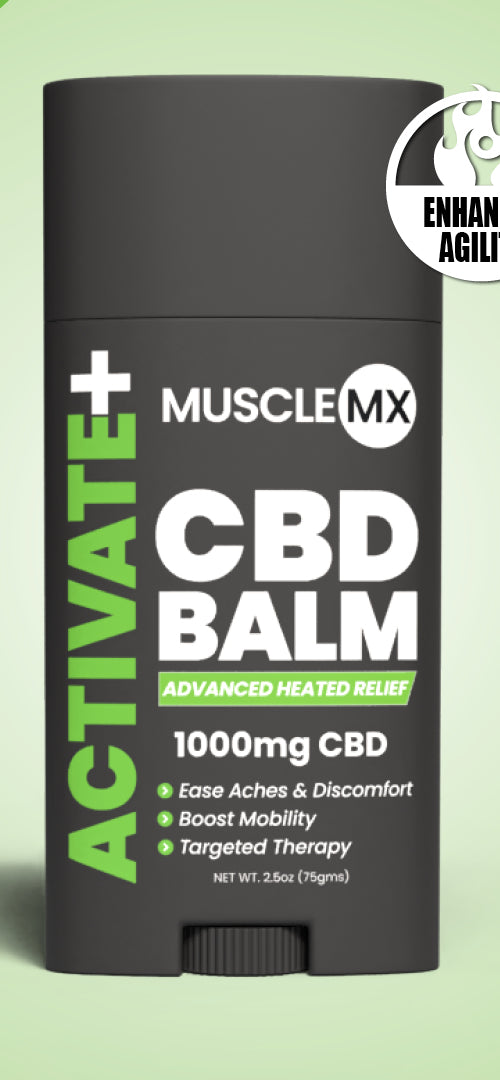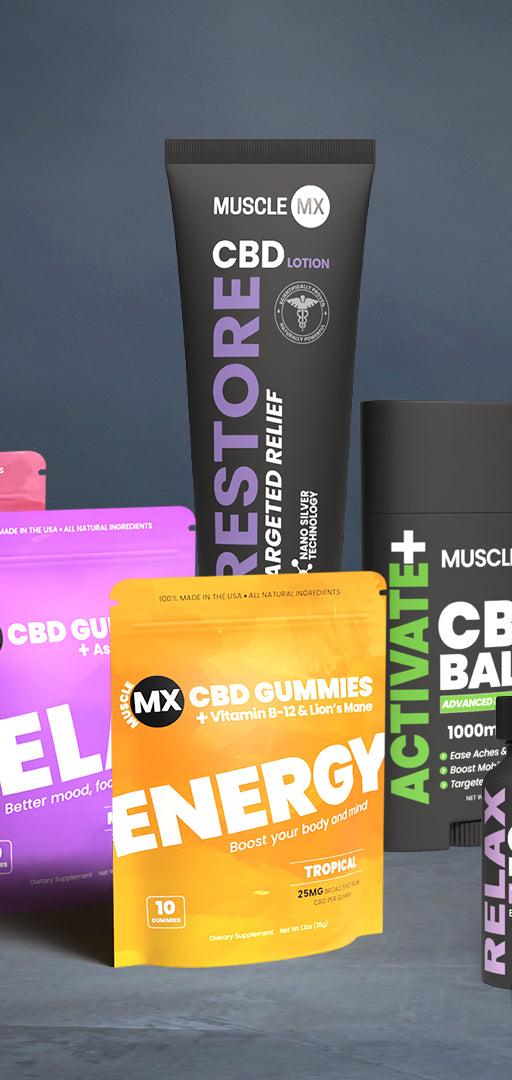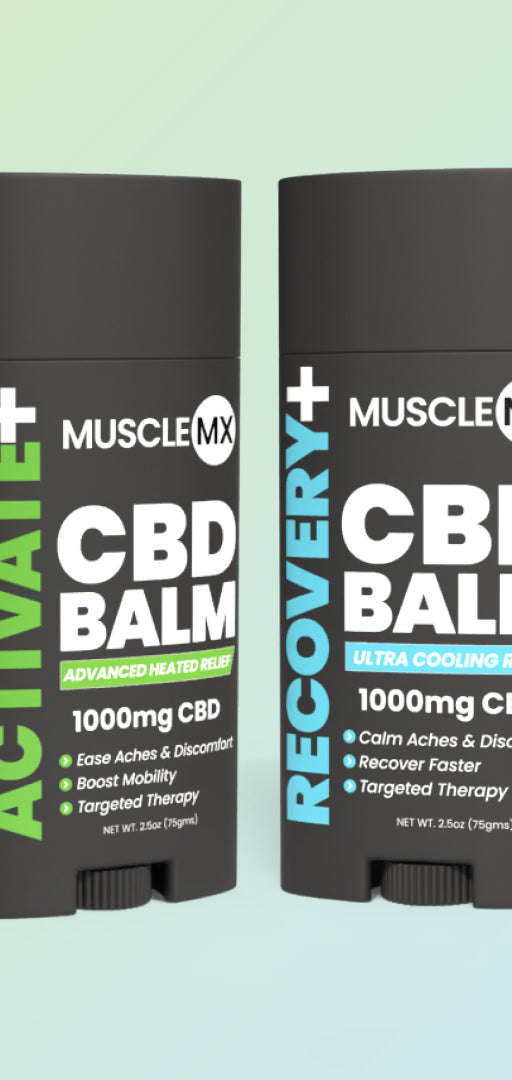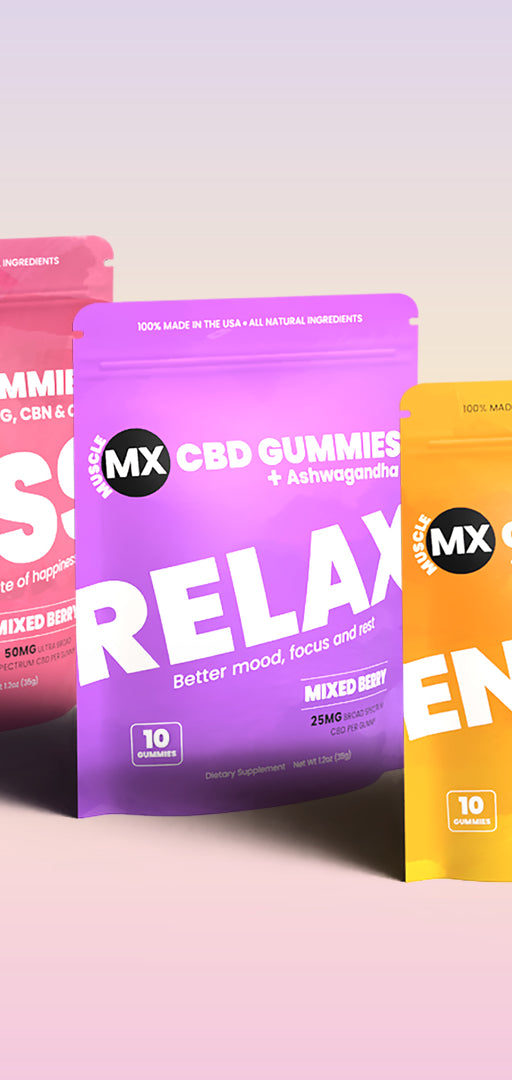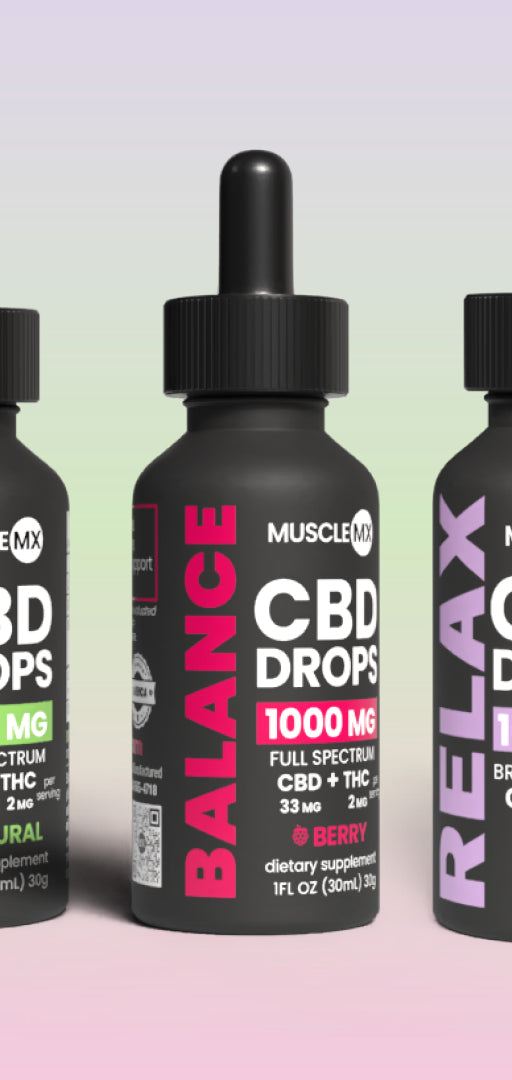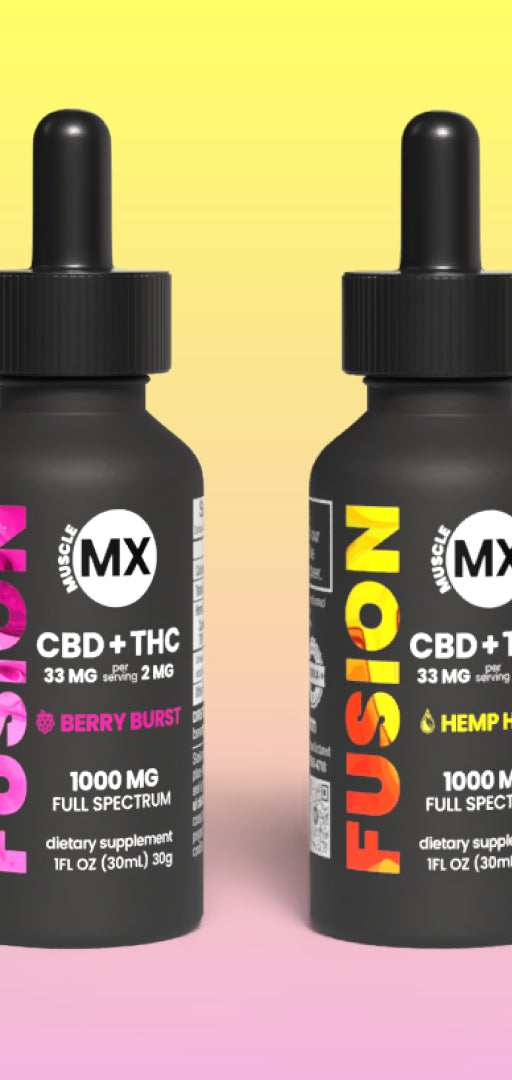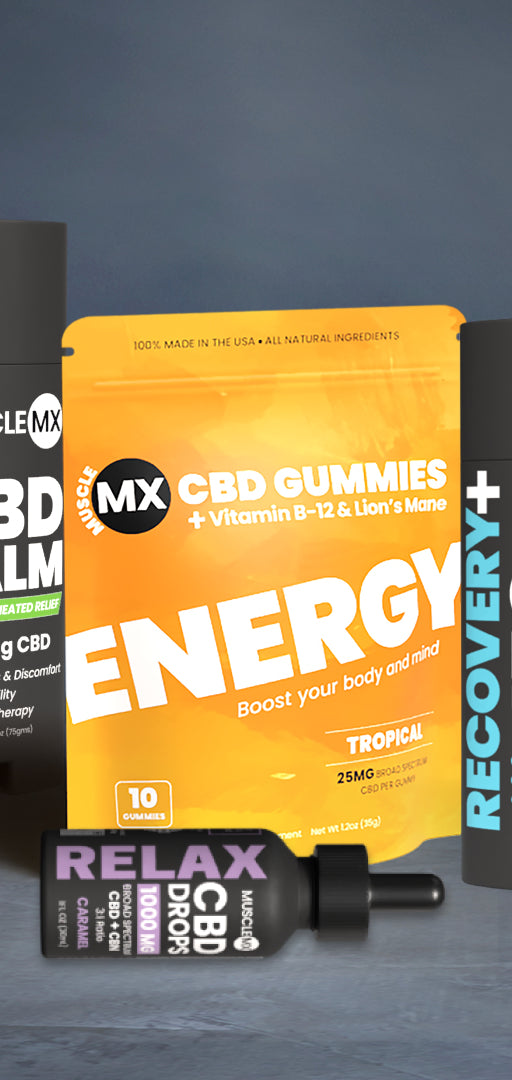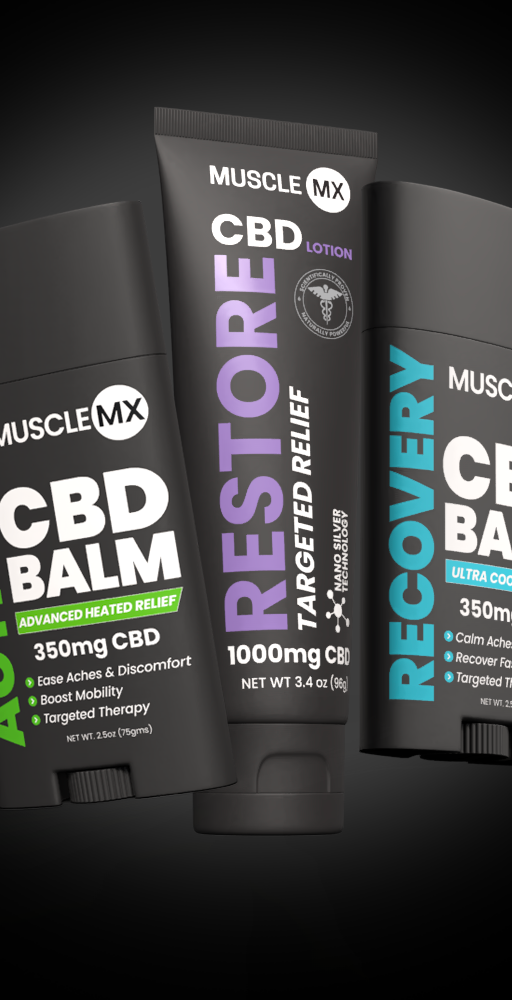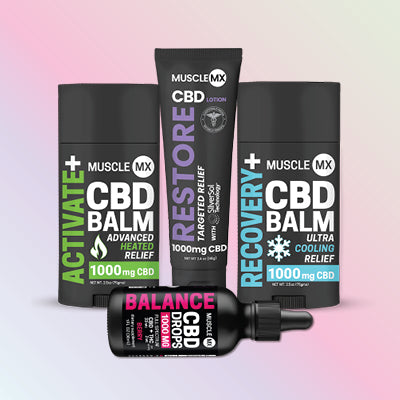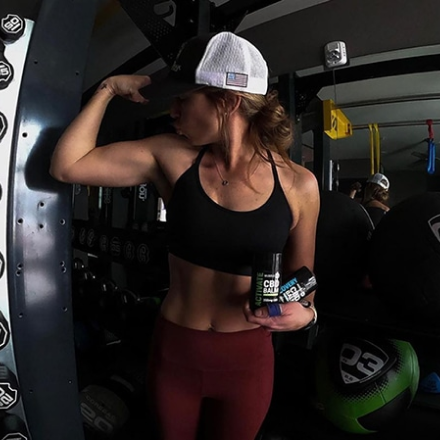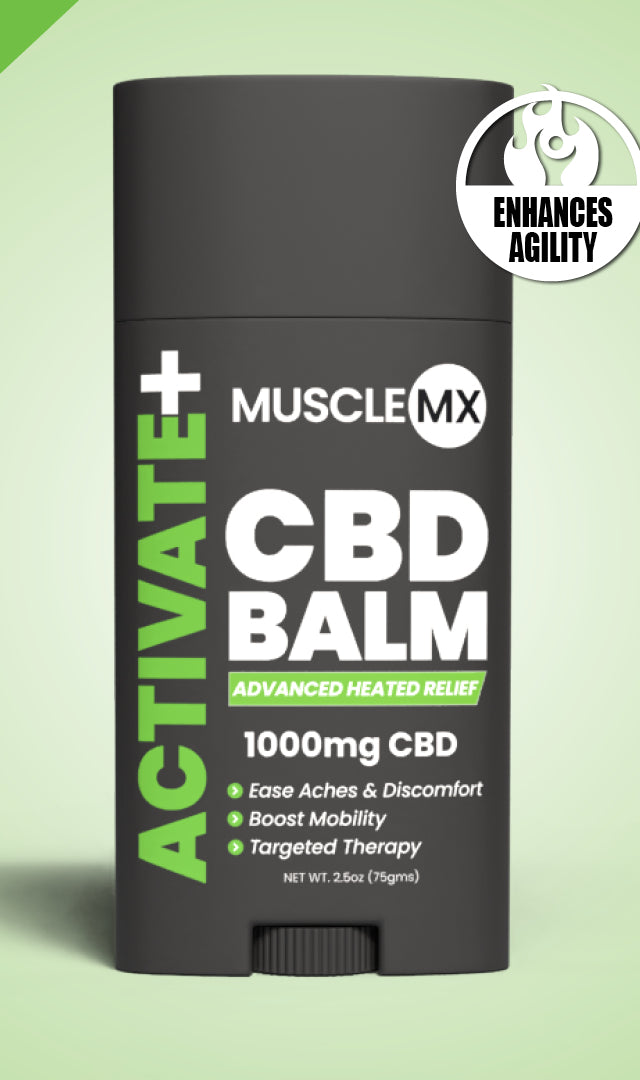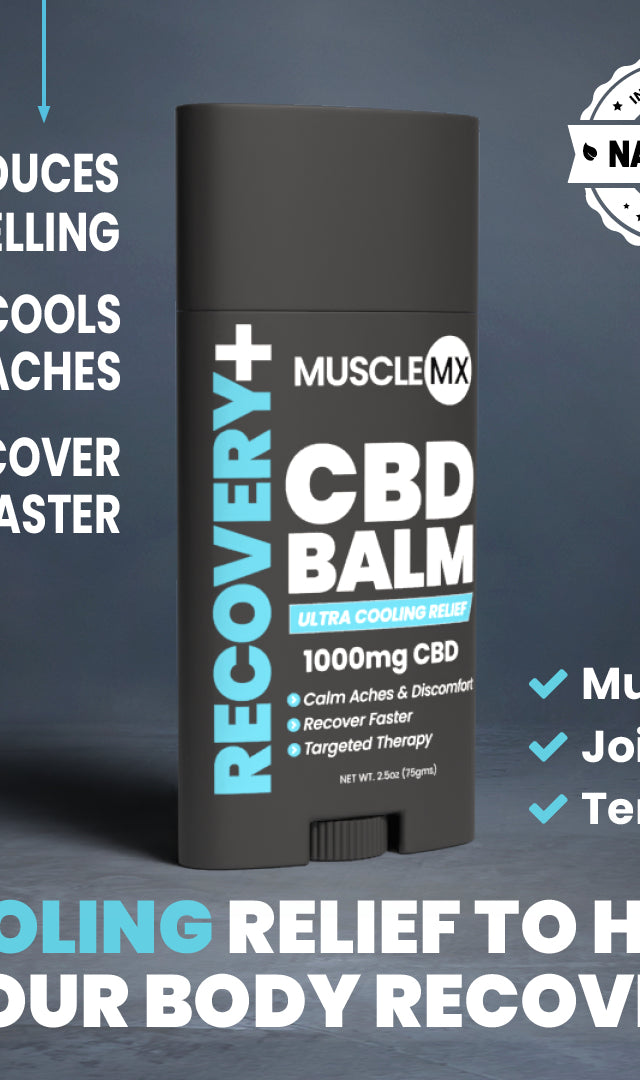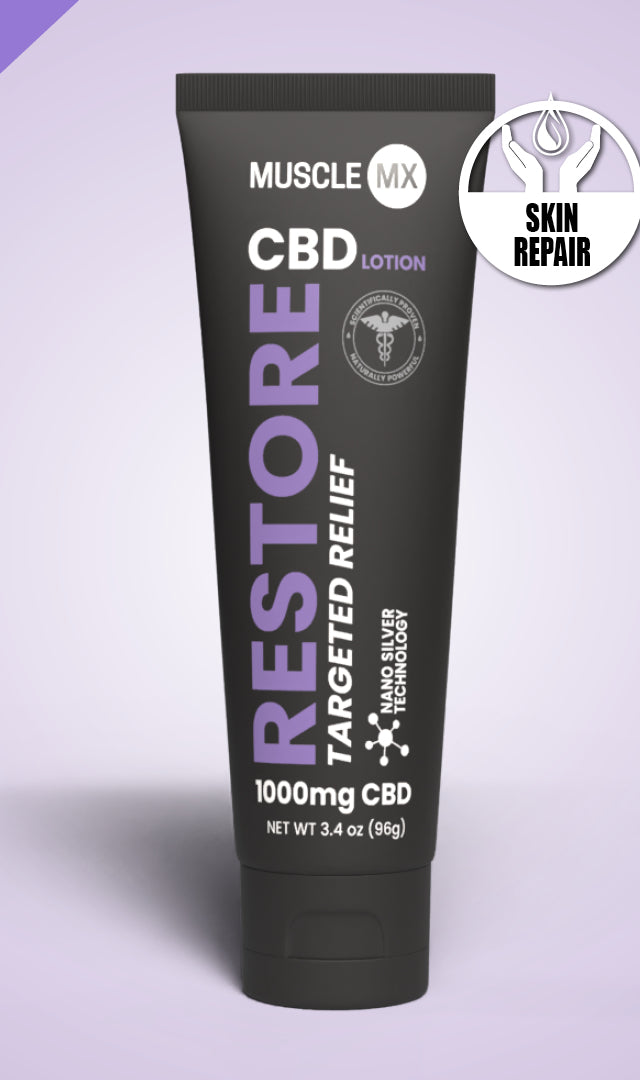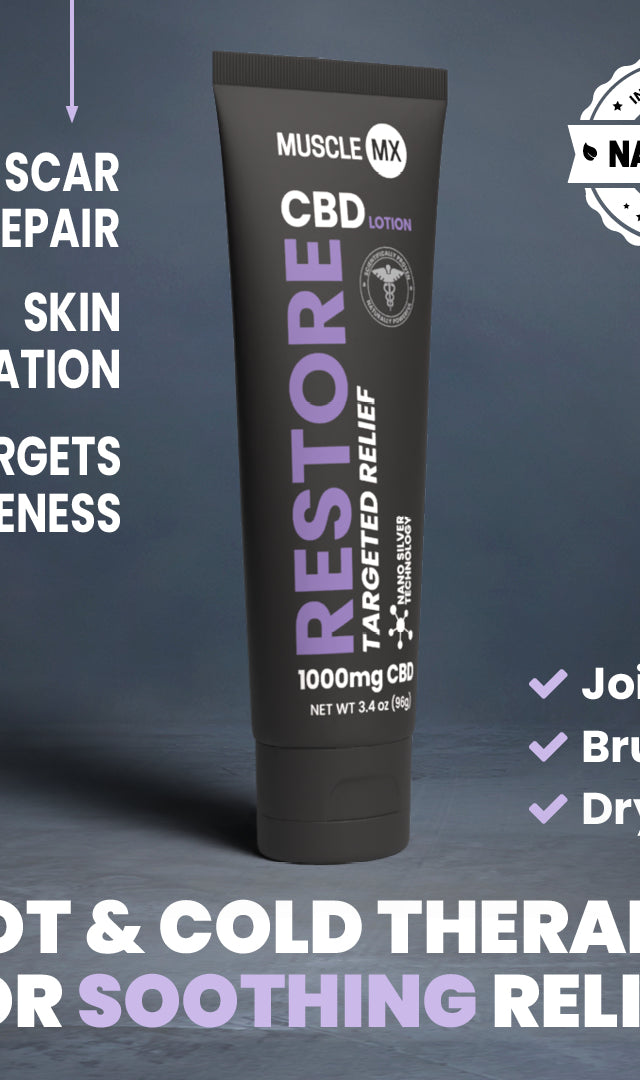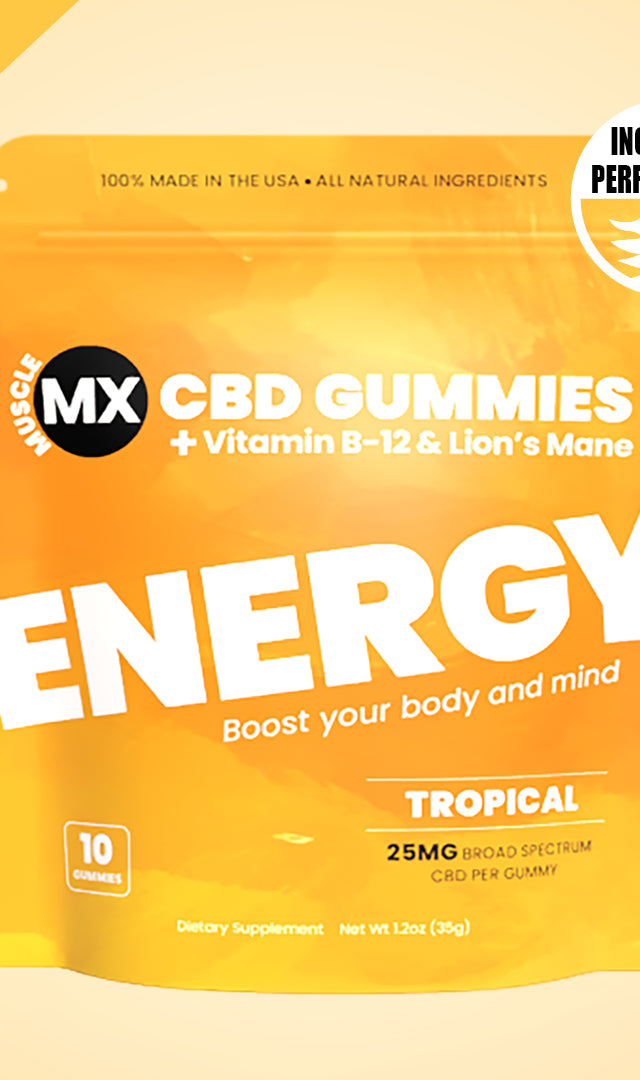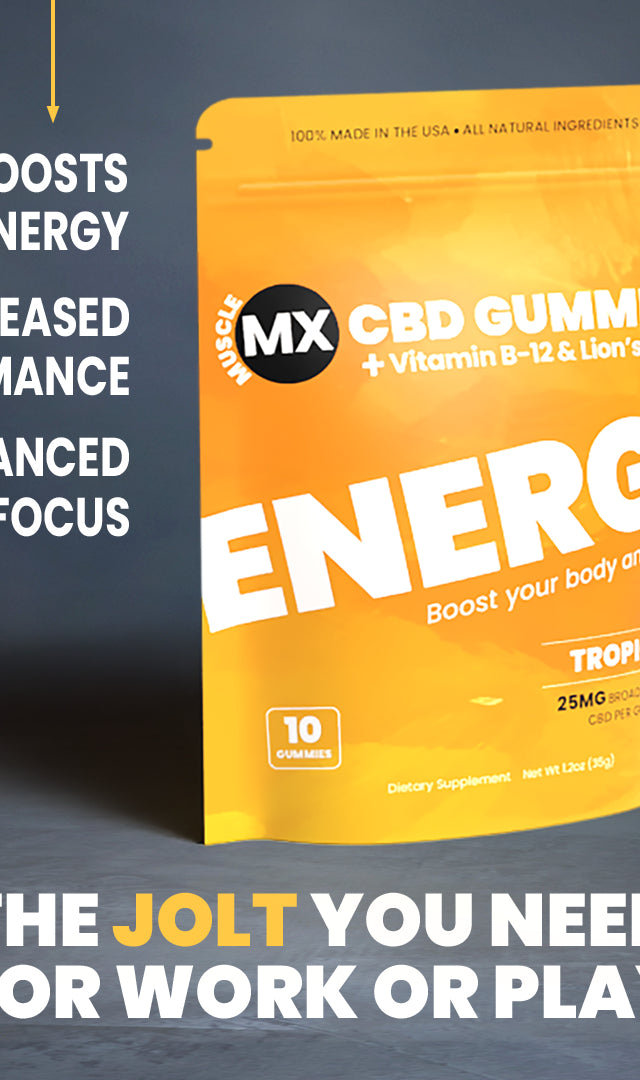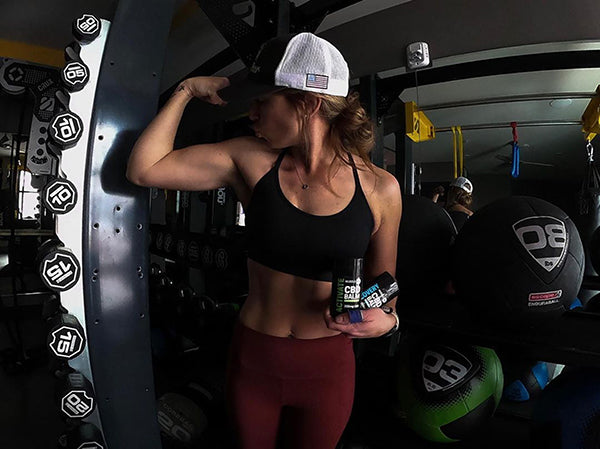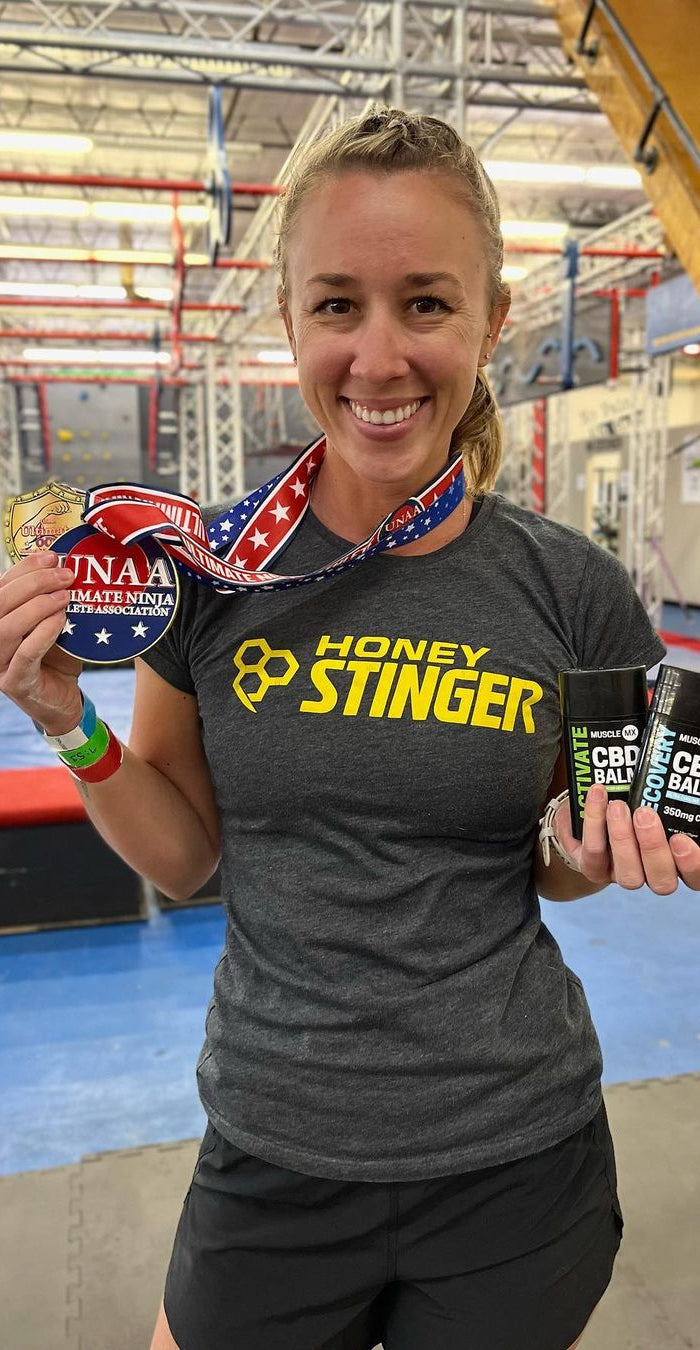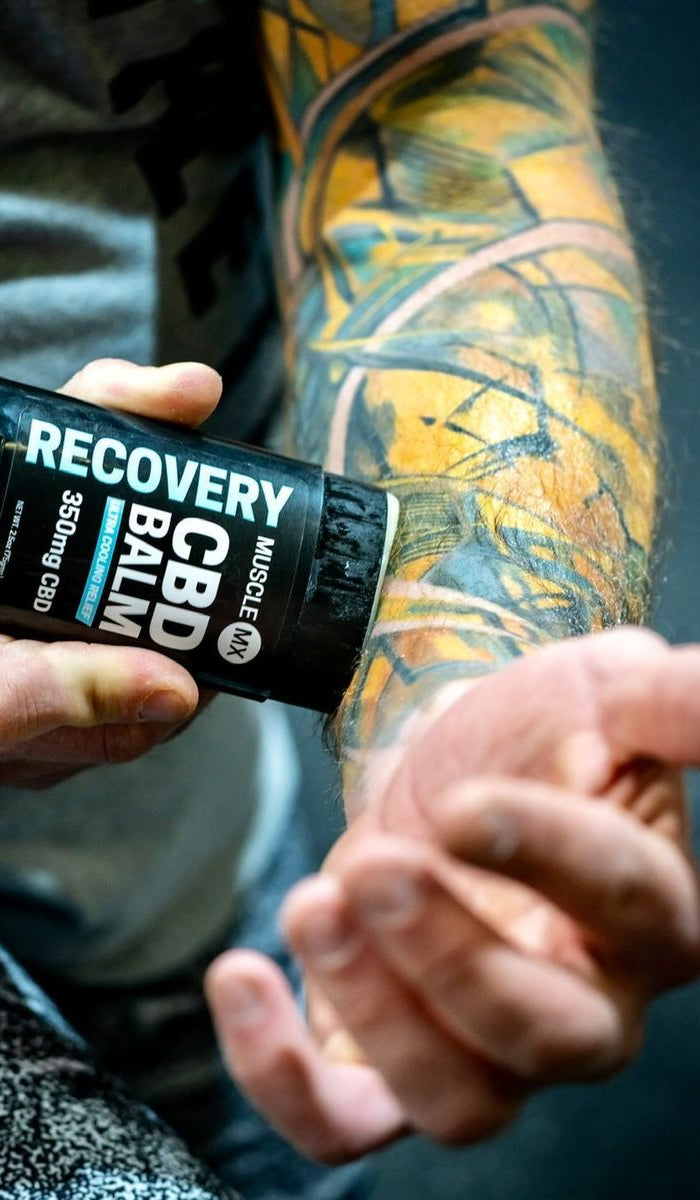Muscle recovery — it's the element of training that often gets pushed aside, yet it's absolutely crucial for athletic success. Studies show that delayed onset muscle soreness (DOMS) typically strikes between 12 and 48 hours after a workout, reminding us that our bodies need proper time to heal.
The statistics paint a clear picture of why recovery matters. Approximately and 30% of non-elite endurance athletes experience overtraining syndrome, largely because they don't give their bodies adequate recovery time. When you engage in intense exercise, your muscles develop microscopic tears, fatigue, and weakness that require proper healing.60% of elite athletes
Science has revealed numerous ways to speed up muscle recovery after workout. From something as simple as proper hydration (drinking 8 ounces of water for every 15-30 minutes of exercise) to more targeted approaches like strategic nutritional timing, there are proven methods to help your body bounce back faster.
Let's learn more about these science-backed techniques that athletes at all levels use to reduce downtime and enhance performance. Understanding these methods can help you get back to training sooner and with greater strength. Whether you're training for competition or simply trying to stay fit, these recovery strategies can make a significant difference in how you feel and perform.
Prioritize Sleep for Muscle Repair
Sleep isn't just a period of rest — it's a critical time when your body actively repairs and rebuilds muscle tissue. Even the most advanced training programs and recovery techniques can't make up for inadequate sleep.
Sleep and muscle recovery
The connection between sleep and muscle recovery is fascinating. During deep sleep phases, your body releases , which plays a crucial role in repairing muscle fibers damaged during workouts and supporting protein synthesis. Think of sleep as your body's natural repair shop, where all the maintenance work happens while you're unconscious.human growth hormone (HGH)
Research consistently shows that good sleep quality directly correlates with greater muscle strength, while shortened sleep duration increases your risk for decreased muscle performance. Have you noticed how much weaker you feel after a poor night's sleep? That's not just in your head — it's a physiological response.
Your hormonal balance also hinges on quality sleep. Poor sleep patterns disrupt cortisol levels and reduce testosterone production, essentially shifting your body from an anabolic (muscle-building) state to a catabolic (muscle-breaking) one. Sleep deprivation also increases pro-inflammatory cytokines like IL-6, which can interfere with your body's natural recovery processes.
How much sleep athletes need
While health guidelines recommend at least seven hours of sleep nightly for most adults, athletes typically require more. For optimal muscle recovery, most sleep experts and sport scientists advise 8-10 hours of sleep for serious athletes.
Unfortunately, there's a significant sleep deficit in the athletic community. Studies reveal that elite athletes report needing approximately 8.3 hours of sleep to feel fully rested, but their average sleep duration is only 6.7 hours — creating a sleep deficit of about 96 minutes each night. Perhaps most concerning, only 3% of athletes get enough sleep to meet their self-assessed needs, while 71% fall short by an hour or more.
Tips for better sleep quality
To maximize muscle recovery through sleep, try these evidence-based strategies:
Create a sleep sanctuary: Keep your bedroom cool (60-67°F), completely dark, and quiet. Blackout curtains or earplugs can make a tremendous difference if your environment is less than ideal.
Establish a consistent schedule: Go to bed and wake up at the same times daily to help regulate your body's internal clock.
Implement a wind-down routine: Spend 20-30 minutes before bed transitioning to sleep with relaxing activities like reading a physical book (not on a screen).
Limit screen exposure: The blue light from electronic devices can suppress melatonin production, so try to avoid screens 1-2 hours before bedtime.
Time your exercise appropriately: While regular exercise improves sleep quality overall, try to avoid high-intensity workouts within 3-4 hours of bedtime.
Remember, treating sleep as seriously as your training and nutrition creates the optimal environment for muscle repair and growth. By prioritizing quality sleep, you'll likely experience faster recovery between workouts and better overall athletic performance.
Stay Hydrated to Flush Toxins
Proper hydration is the foundation of effective muscle recovery, yet studies show. This simple oversight can dramatically impact your performance and lengthen the time needed between workouts.approximately 66% of collegiate athletes arrive at practice already dehydrated
Hydration and muscle recovery
Did you know that water makes up between 50-75% of your body weight? This essential fluid plays a crucial role in virtually every recovery process your body undergoes. When you're well-hydrated, your blood flows more efficiently, delivering vital oxygen and nutrients to damaged muscle tissue while simultaneously clearing away metabolic waste products.
The research is clear about hydration's importance. Even mild dehydration (around 2% of body weight) significantly impairs athletic performance, reducing strength by approximately 2%, power by 3%, and high-intensity endurance by a substantial 10%. Dehydration also makes your blood thicker, hampering your body's ability to flush out exercise-generated toxins and potentially extending muscle soreness.
For optimal muscle recovery after workout, following the National Athletic Trainers' Association guidelines makes a noticeable difference: drink 500-600ml of water 2-3 hours before exercise, another 200-300ml 10-20 minutes before starting, and 200-300ml every 10-20 minutes during activity. After your workout, aim to replace 16-24 ounces of fluid for every pound lost through sweat, focusing on consumption within 2 hours post-training.
Signs of dehydration
Recognizing dehydration before it hampers your recovery requires paying attention to your body's signals. Rather than waiting until you feel thirsty (which indicates you're already dehydrated), watch for these early warning signs:
Urine color: Dark yellow or amber urine rather than pale straw color
Decreased performance: Reduced coordination, strength, and endurance
Physical symptoms: Dry mouth, headache, dizziness, unusual fatigue
Muscle issues: Unexpected cramping, weakness, or increased soreness
When properly hydrated, your urine appears pale yellow, you maintain normal energy levels, and your muscles recover more quickly between sessions.
Best fluids for recovery
While water remains your fundamental hydration source, certain beverages offer enhanced recovery benefits. For workouts lasting over 60-90 minutes or those causing substantial sweat loss, consider incorporating:
Electrolyte drinks: These replace sodium, potassium, and chloride lost through sweat, helping prevent performance-hampering muscle cramps. Look for sports drinks with less than 8% carbohydrate concentration to ensure optimal fluid absorption.
Milk: Research indicates milk tops the list of most hydrating beverages and helps reduce post-workout soreness while supporting muscle mass development. Chocolate milk provides additional carbohydrates for glycogen replenishment plus protein for muscle repair.
Tart cherry juice: Rich in anthocyanins and other anti-inflammatory compounds that combat muscle damage while reducing inflammation.
For intense training sessions, tracking your weight before and after workouts helps calculate precise fluid replacement needs—approximately 24 ounces per pound lost [3]. Through consistent hydration practices, your muscles can recover more quickly, allowing for more productive training sessions with less downtime.
Remember, staying properly hydrated isn't just about performance—it's about giving your body the resources it needs to repair and strengthen itself after the demands you place on it.
Fuel Up with the Right Nutrition
Strategic nutrition is essential for muscle recovery after workout. When you provide your body with the right nutrients, you create the ideal environment for healing those tiny tears that occur during exercise. Understanding how to fuel your body properly can significantly speed up your recovery process.
What Are the Best Macronutrients for Recovery?
Each macronutrient plays a specific role in helping your muscles recover:
Protein is fundamental for muscle repair. For strength training recovery, aim for. Try distributing this across 4 meals (0.25–0.5 g/kg per meal) to maximize muscle protein synthesis. Complete proteins with all nine essential amino acids work best, with 20-25g of high-quality protein within 2 hours after exercise showing the greatest benefit. 1.6–2.0 g/kg of body weight daily
Carbohydrates help replenish your depleted glycogen stores, which prevents your body from breaking down muscle for energy. Your carbohydrate needs depend on how intensely you exercise:
- Low intensity/skill-based activities: 3–5 g/kg daily
- Moderate intensity exercise: 5–7 g/kg daily
- High intensity training: 6–10 g/kg daily
- Extreme endurance activities: 8–12 g/kg daily
Fats should make up about 20-35% of your daily calories. Healthy fats support hormone production needed for muscle growth and help manage inflammation. Don't overlook this important macronutrient in your recovery nutrition plan.
When Should You Eat for Optimal Recovery?
Timing matters almost as much as what you eat. The "golden window" for recovery nutrition falls within 30-45 minutes after your workout. During this time, your muscle cells show increased insulin sensitivity, which allows them to absorb glucose and amino acids more efficiently.
For best results, try to consume a meal containing both carbohydrates and protein within two hours after exercise. Studies indicate that a 4:1 ratio of carbohydrates to protein during early recovery phases positively impacts your subsequent performance. After intense exercise, consuming 1g/kg/hour of carbohydrates for four hours is one of the most important factors in replenishing muscle glycogen.
What Foods Support Muscle Recovery Best?
Some foods stand out for their recovery benefits:
- Lean protein sources: Chicken, turkey, fatty fish, eggs, Greek yogurt, and whey protein provide complete amino acids that help repair tissue
- Complex carbohydrates: Sweet potatoes, oatmeal, whole grain pasta, quinoa, and fruits efficiently replenish glycogen
- Anti-inflammatory foods: Tart cherries, wild blueberries, and fatty fish contain compounds that help fight exercise-induced inflammation
- Recovery combinations: Chocolate milk offers an ideal carbohydrate-protein ratio, while Greek yogurt with berries provides protein with antioxidants
Creating meals that combine protein with carbohydrates works best—think grilled chicken with quinoa and vegetables, or a protein shake with a banana. These combinations help replenish glycogen while supporting the hormone secretion necessary for muscle growth.
Remember, your body can only repair itself with the materials you provide. By fueling strategically with the right nutrients at the right times, you create the optimal environment for muscle recovery and growth.
Prioritize Sleep for Muscle Repair
Without adequate sleep, even the most sophisticated training programs and recovery methods fall short. Sleep isn't just rest — it's a biological necessity where your body actively repairs and builds muscle tissue.
What Happens During Sleep
The science behind sleep's impact on muscle recovery is compelling. During deep sleep, your body secretes human growth hormone (HGH), which plays a crucial role in muscle repair and protein synthesis. This hormone stimulates the rebuilding of damaged muscle fibers from your workouts. Research shows that good sleep quality directly connects to greater muscle strength, while short sleep duration increases your risk for decreased strength.
Sleep also dramatically affects your hormonal balance. Poor sleep patterns alter cortisol levels and reduce testosterone production, shifting your body toward a catabolic (muscle-breaking) rather than anabolic (muscle-building) state. Additionally, sleep deprivation increases pro-inflammatory cytokines like IL-6, which can hinder muscle recovery and repair.
How Much Sleep Athletes Need
Most adults need at least seven hours of sleep per night according to health guidelines, but athletes typically require more. For optimal muscle recovery, most sport scientists and sleep experts recommend 8-10 hours of sleep for elite athletes.
Yet there's a significant sleep deficit in the athletic community. Research reveals that elite athletes report needing approximately 8.3 hours of sleep to feel rested, but their average sleep duration is only 6.7 hours — creating a sleep deficit of about 96 minutes per night. Shockingly, only 3% of athletes obtain enough sleep to satisfy their self-assessed sleep need, while 71% fall short by an hour or more.
Tips for Better Sleep Quality
To maximize muscle recovery through sleep, try these evidence-based strategies:
- Create a sleep sanctuary: Keep your bedroom cool (60-67°F), completely dark, and quiet. Consider blackout curtains or earplugs if needed.
- Establish a consistent schedule: Go to bed and wake up at the same times daily to regulate your circadian rhythm.
- Implement a wind-down routine: Spend 20-30 minutes before bed transitioning to sleep with relaxing activities like reading (from a physical book, not a screen).
- Limit screen exposure: Avoid electronics 1-2 hours before bedtime as blue light can suppress melatonin production.
- Time your exercise appropriately: While regular exercise improves sleep quality, avoid high-intensity workouts within 3-4 hours of bedtime.
By treating sleep as seriously as your training and nutrition, you'll create the optimal internal environment for muscle repair and growth, ultimately speeding up recovery between workouts.
Foam rolling
Foam rolling — it's a powerful technique for muscle recovery that works like a form of self-massage for tight muscles and connective tissue. Unlike traditional stretching, foam rolling targets the fascia, that thin layer of connective tissue surrounding your muscles, bones, and joints.
What Is the Science Behind Foam Rolling?
Foam rolling works through several key mechanisms to enhance your muscle recovery. When you apply pressure to muscles, it to those areas, helping flush out toxins while delivering oxygen and nutrients to damaged tissues. This increased circulation can speed up muscle healing by boosting the number of circulating neutrophils.stimulates blood flow
Your nervous system also responds to foam rolling. The constant pressure overloads skin receptors, which helps decrease pain sensation and increase how far you can stretch. Research shows that the pressure from your body weight may help rearrange soft tissues, changing how your central nervous system perceives pain.
How Should You Foam Roll for Best Results?
For optimal benefits, follow these evidence-based techniques:
- Start with light pressure and gradually increase as your muscles adapt
- Roll slowly, pausing on tender points for 5-30 seconds until you feel the tension release
- Work each muscle in three sections—bottom, middle, and top—giving each part several passes
- Keep the muscle you're targeting in an extended position
- Avoid rolling directly over joints, bones, or sensitive areas
Research suggests doing 3-5 sets of 20-30 second repetitions per muscle group, 3-5 times weekly for the best flexibility improvements. Focus on large muscle groups like your quadriceps, hamstrings, glutes, and back for particularly good results.
When Is the Best Time to Foam Roll?
The timing of your foam rolling sessions can significantly impact how effective they are. Interestingly, foam rolling before a workout increases your range of motion without reducing muscle strength, making it more effective than static stretching as part of your warm-up.
Rolling immediately after exercise helps speed recovery by stimulating blood flow that assists with nutrient delivery. Studies show that a 20-minute foam rolling session after exercise can reduce delayed onset muscle soreness while improving movement quality.
Perhaps most surprising, foam rolling before bedtime can be especially beneficial. Because it activates your parasympathetic nervous system (the part responsible for relaxation), evening foam rolling may improve your sleep quality while also supporting recovery.
Try Massage Therapy for Soreness Relief
Massage therapy — it's one of the oldest recovery methods available, yet science continues to validate its effectiveness for reducing muscle soreness after workout. This hands-on approach targets muscle tension directly at its source while complementing other recovery techniques you might already be using.
Massage and blood flow
The main reason massage works so well involves its powerful impact on your circulation. Studies show that massage significantly in both the treated area and surrounding tissues. This improved circulation helps your body flush out those metabolic waste products that build up during intense exercise, speeding up your healing process.increases blood flow
When applied to tired, worked muscles, massage increases blood volume more effectively than simply resting. What's particularly interesting is that a recent study found massage therapy improved vascular function even in people who hadn't exercised, suggesting benefits regardless of your activity level. This blood vessel-opening effect continues long after your treatment ends, which researchers can measure through increased skin temperature following massage.
Types of massage for athletes
Different massage techniques can offer unique benefits depending on where you are in your training cycle:
- Swedish massage: Uses long, flowing strokes (effleurage) and kneading (petrissage) to promote relaxation and improve general circulation
- Deep tissue massage: Applies firmer pressure to reach deeper muscle layers, breaking down adhesions and supporting recovery
- Sports massage: Specifically designed for athletes, available as pre-event (to prepare muscles), post-event (to reduce soreness), maintenance, or rehabilitation
- Trigger point therapy: Focuses on releasing specific "knots" through direct pressure, reducing pain patterns and improving range of motion
Research shows that massage incorporating effleurage, petrissage and friction techniques can reduce delayed onset muscle soreness by approximately 30%.
How often to get massages
Professional athletes typically receive massage 2-3 times weekly to maintain peak performance [35], but even recreational athletes can benefit from regular sessions. How often you should get a massage depends mainly on your training intensity:
- Heavy daily training: 2-3 sessions weekly
- Moderate regular exercise: Bi-weekly or monthly
- Pre-competition: Increased frequency during intensive training periods
- Post-injury: More frequent sessions initially, then tapering down
If professional massage isn't regularly available to you, self-massage techniques using foam rollers, massage balls, or handheld devices can provide significant benefits between sessions. Even a 10-minute daily self-massage routine can effectively prevent tension from building up in your most-used muscles.
Remember, massage therapy isn't just a luxury — it's a scientifically-backed recovery method that can help you bounce back faster between training sessions.
Apply Heating and Cooling CBD Balm
CBD balms offer a fresh approach to muscle recovery that many athletes are now exploring. These specialized products combine the anti-inflammatory properties of cannabidiol with targeted application directly to problem areas. Unlike pills or other systemic treatments, CBD balms work right where you need them most.
How CBD balm helps sore muscles
The way CBD balm works is fascinating — it interacts directly with cannabinoid receptors in your skin. When applied to sore muscles, CBD may associated with delayed onset muscle soreness (DOMS). This interaction can both numb the affected area and address the underlying inflammation causing your discomfort.reduce inflammation and ease pain
For those times when your muscles feel particularly beaten up after an intense workout, CBD balm can provide localized relief. You'll typically notice effects within about 10-15 minutes, and they generally last for 2-3 hours. What's encouraging is that clinical studies support these benefits — participants reported their pain levels dropping from an average of 3.5 to 1.7 after regular application.
When to use heat vs cold
Timing matters when it comes to getting the most from CBD balm. Applying before your workout might help keep discomfort at bay during training, while post-workout application can potentially speed recovery. For recovery purposes, cold-based CBD formulations work best immediately after exercise when you're dealing with inflammation and swelling.
Heat-based CBD balms, on the other hand, increase blood flow and are better suited for:
- Muscle spasms and tension (48+ hours post-exercise)
- Stiff joints that need improved mobility
- Pre-workout preparation to enhance flexibility
Remember that heat should never be used within the first 48 hours after injury as it can actually increase inflammation rather than reduce it.
Safety and effectiveness
According to the World Health Organization, most CBD balms are considered relatively safe. Even products containing trace amounts of THC typically won't cause any impairment since the compounds don't enter your bloodstream.
It's worth noting that results can vary significantly between individuals. Some people experience noticeable pain relief and reduced inflammation, while others may report minimal change. Many CBD topicals also include additional ingredients like menthol, capsaicin, or camphor, which may enhance their effectiveness through cooling or heating properties that complement the CBD.
Warm Up and Cool Down Properly
Warm-up and cool-down routines — they're often the first things we skip when we're short on time, yet they're absolutely essential for muscle recovery and injury prevention. Research shows that proper warm-up activities improve performance in 79% of cases, highlighting just how crucial these bookends to your workout really are.
Why warm-ups matter
Your body needs a proper transition into exercise, and warm-ups provide exactly that. When you warm up, your body temperature gradually increases, your blood vessels open, and oxygen delivery to your muscles improves. This creates what's known as a thixotropic effect on your muscles and tendons — making them less stiff and more fluid, similar to how honey becomes thinner when you stir it into hot tea.
Warm-ups aren't just about your muscles — they're about your nervous system too. Dynamic warming up activates the muscle spindles that enhance communication between your mind and muscles, making your body more responsive. This neurological preparation reduces your risk of injury while improving your performance through better agility, speed, and power output. Studies with soccer players have found that tailored dynamic warm-ups can reduce injury odds by approximately 30%.
Cool-down techniques
Just as you shouldn't jump straight into exercise, you shouldn't stop abruptly either. A proper cool-down helps your body transition from activity to rest, allowing your heart rate, blood pressure, and body temperature to return to normal. Stopping exercise suddenly can cause dizziness or blood pooling in your veins, while a gradual cool-down keeps your circulation active.
For an effective cool-down, try these approaches:
- Light aerobic activity like walking or slow cycling for 5-10 minutes
- Static stretching while your muscles are still warm
- Breathing exercises to help activate your parasympathetic nervous system
Static stretches held for 20-45 seconds work particularly well during cool-downs, helping improve your flexibility without the performance drawbacks they can have during warm-ups.
Stretching tips
Both types of stretching have their place, but timing is everything. Dynamic stretching involves controlled movements through your full range of motion and works best before exercise [50]. Think movements like leg swings, lunges, and arm circles rather than holding stretches.
Static stretching, on the other hand, should be saved for your cool-down. This approach, where you hold stretches for longer periods, helps reduce lactic acid buildup and prevents stiffness. Throughout both phases, remember to breathe easily, never bounce, and avoid pushing through pain.
By incorporating these simple but effective practices into your routine, you'll create the ideal conditions for muscle recovery while enhancing your performance and reducing your risk of injury.
Use Protein Supplements Wisely
Protein supplements — they offer a convenient way to meet your daily protein needs for muscle recovery, but not all provide the same benefits. Getting familiar with the different types, optimal timing, and appropriate amounts can make a substantial difference in how quickly your muscles bounce back after tough workouts.
Whey vs casein
Whey and casein are both high-quality proteins derived from milk, but they work in completely different ways in your body. Whey protein is often called the "fast protein" because it digests quickly, flooding your bloodstream with amino acids shortly after you consume it. Casein, on the other hand, coagulates in your stomach, creating a slow-release mechanism that keeps amino acid levels elevated for 4-5 hours.
Have you ever wondered which is better for post-workout recovery? Whey contains higher concentrations of branched-chain amino acids (BCAAs), particularly leucine, making it excellent for stimulating muscle protein synthesis right after exercise. Meanwhile, casein provides a prolonged anti-catabolic effect, essentially protecting your muscles from breaking down during periods when you're not eating, like during sleep.
When to take protein
The timing of your protein intake can significantly impact its effectiveness for muscle recovery. Research shows that protein consumed after exercise and before bedtime is particularly effective for improving muscle mass and strength [56]. For optimal post-workout benefits, try to consume protein within two hours after your training session.
Evening protein consumption offers some unique advantages too. One study found that consuming 40g of protein before bed led to measurable improvements in overnight muscle adaptation and growth. Because of its slow-digesting properties, casein protein is especially well-suited for nighttime consumption.
How much protein is enough
Most physically active people need about 1.6-2.0 grams of protein per kilogram of body weight daily (that's roughly 0.6-0.9g per pound). Remember that your protein requirements increase during periods of higher training frequency, greater intensity, and when you're restricting calories.
For the best muscle protein synthesis, it's smart to distribute your protein intake evenly throughout the day in meals containing 0.25-0.40g/kg (approximately 20-40g per serving). This approach ensures your body has a continuous supply of amino acids for muscle repair, which works better than consuming large amounts in just one or two meals.
Protein supplements can be valuable tools when whole food options aren't practical — especially when you're short on time or when you'd need to eat a large volume of food to meet your protein needs. They're not meant to replace whole foods entirely, but rather to supplement your diet when necessary.
Monitor for Overtraining Symptoms
Recognizing the warning signs of overtraining is essential for both your athletic success and muscle recovery. Overtraining isn't just a professional athlete problem — studies show it affects approximately 60% of elite athletes and 30% of non-elite endurance athletes. If you're engaged in regular physical training, staying vigilant about these signs can help you avoid significant setbacks.
Signs of overtraining
Your body communicates when it needs more recovery time. Have you noticed persistent fatigue that doesn't improve with your normal rest routine? This is one of the most common signals your body sends when it's overworked. Other physical indicators include unexpected performance decreases that last between one week and one month, and muscle soreness that lingers far longer than it should.
Keep an eye out for these additional warning signs:
- Sleep disturbances (difficulty falling or staying asleep)
- Elevated resting heart rate
- Frequent illnesses as your immune system weakens
Your mental state often signals overtraining before physical symptoms appear. Irritability, mood swings, decreased motivation, and general mental burnout frequently precede physical breakdown. Interestingly, research with swimmers showed that athletes showing signs of overtraining had significantly higher levels of norepinephrine starting mid-season, revealing how insufficient recovery impacts your hormonal balance.
How to prevent burnout
Preventing burnout requires thoughtful planning rather than pushing through discomfort. Include at least one complete rest day in your weekly schedule and vary your training intensity throughout the week. This means alternating between high-intensity, low-intensity, and moderate-intensity days.
For long-term athletic sustainability, incorporate longer recovery periods of a few weeks several times throughout the year. This approach allows your body to fully recover from accumulated stress.
Monitoring how you feel is remarkably effective — simple measures of fatigue, stress, and muscle soreness have accounted for 72% of variation in performance improvement. Make sure you're getting 7-8 hours of sleep nightly [67] and maintaining proper nutrition, especially during intensive training phases.
When to take a rest day
Take immediate rest when you experience these key warning signs:
- General feelings of fatigue that seem greater than normal
- Unexplained decreases in your usual performance
- Musculoskeletal aches that persist beyond typical post-workout soreness
Emotional changes, like unusual moodiness or decreased enthusiasm for activities you typically enjoy, also signal your body's need for recovery.
Remember, taking necessary rest days doesn't indicate weakness — rather, it represents strategic training that acknowledges how muscle growth and performance improvements happen primarily during rest phases, not during the workouts themselves. Catching these signs early prevents minor issues from developing into major setbacks that could derail your training for weeks or months.
Stay Consistent with Your Recovery Routine
Consistency — it's the often overlooked hero of effective muscle recovery. While many athletes focus on specific recovery techniques, the regular application of these methods proves just as crucial as the methods themselves. Elite athletes understand that sporadic recovery efforts yield minimal benefits, while forming lasting recovery habits creates the foundation for continual improvement and athletic longevity.
Building a recovery habit
The most successful athletes treat recovery with the same seriousness as their training sessions. They don't view recovery as optional — they schedule specific recovery periods into their weekly routines, making them non-negotiable commitments.
Think about it this way: just as you wouldn't skip a doctor's appointment, your recovery sessions deserve equal commitment.
Creating sustainable recovery habits ensures your body can handle the ongoing stress of performance over time. Through consistent implementation of rest periods, you'll build strength and endurance beyond what intense workouts alone could achieve. Remember that your body adapts during recovery, not during the actual workout.
The most beneficial approach combines both time-based routines and individualized methods. Mark your recovery activities in your calendar—whether it's foam rolling, mobility work, or complete rest days—creating consistency that helps prevent both acute injuries and chronic overtraining.
Tracking your progress
Maintaining a detailed recovery log provides invaluable insights into your body's response patterns. Document your workouts, recovery activities, nutrition, sleep quality, and how you feel on a scale from 1-10 after each session. This information reveals connections between your recovery practices and performance outcomes.
For serious athletes, tracking recovery metrics helps prevent schedule slippage and ensures rest days actually happen. These logs become especially powerful when you experience performance plateaus, allowing you to identify whether insufficient recovery might be the culprit rather than inadequate training.
Adjusting based on performance
Effective recovery isn't static — it requires ongoing refinement based on performance feedback. Analyzing your documented patterns helps pinpoint which techniques work best for your body and training style.
Simple measures of fatigue, stress, and muscle soreness account for 72% of variation in performance improvement. If you consistently feel fatigued despite regular recovery efforts, consider extending rest periods or incorporating different recovery modalities.
Your personal recovery needs will evolve with changes in training intensity, volume, and external stressors. By embracing this iterative approach, you'll develop a sustainable system that maximizes muscle recovery after workout while preventing burnout throughout your athletic journey.
The Bottom Line
Muscle recovery deserves the same attention as your workouts themselves. Throughout this guide, we've explored science-backed methods that actually work to reduce downtime between training sessions. The research clearly shows that strategic recovery techniques improve performance while preventing overtraining syndrome — a condition that affects 60% of elite athletes.
Sleep stands as the foundation of effective recovery, yet most athletes fall short by approximately 96 minutes each night. Proper hydration plays an equally important role, with studies showing that even mild dehydration can reduce strength by 2% and power by 3%. Meanwhile, timed nutrition intake — particularly that 4:1 carbohydrate-to-protein ratio consumed within the 30-45 minute window after exercise — provides your body with the essential building blocks it needs for repair.
Active recovery, foam rolling, massage therapy, and CBD balms offer complementary approaches that address muscle tension while enhancing circulation. Proper warm-up and cool-down routines reduce injury risk by approximately 30% when implemented consistently.
Remember that the most effective recovery strategy combines multiple techniques rather than relying on just one. Your specific needs will vary based on your training intensity, individual physiology, and recovery goals. Consistency is the determining factor in long-term success. While implementing all eleven techniques at once might seem overwhelming, gradually incorporating these methods into your routine will significantly transform your training outcomes.
Your muscles grow stronger during recovery, not during workouts themselves. By viewing recovery as an integral part of your training — rather than an afterthought — you'll achieve better performance while extending your athletic career. The time you invest in recovery pays dividends in your long-term athletic development and overall physical wellbeing.
FAQs
Q1. How do elite athletes recover so quickly between intense training sessions? Elite athletes recover quickly through a combination of strategies including optimized sleep, proper nutrition, active recovery techniques, and consistent hydration. They also often have access to advanced recovery tools and sports medicine professionals who help tailor individualized recovery plans.
Q2. What are some of the most effective muscle recovery techniques? Some of the most effective muscle recovery techniques include hydrotherapy, active recovery exercises, strategic stretching, wearing compression garments, and massage therapy. These methods help improve blood flow, reduce inflammation, and promote faster muscle repair.
Q3. What happens to muscles during the recovery process? During recovery, muscles undergo a process of repair and adaptation. Exercise-induced micro-damage triggers inflammation, which signals the body to recruit immune cells and growth factors. These components work together to repair damaged muscle fibers and stimulate muscle growth and strength improvements.
Q4. How can I speed up muscle recovery after an intense workout? To speed up muscle recovery, focus on proper hydration, consume protein-rich foods or shakes within the post-workout window, perform light stretching or foam rolling, and prioritize quality sleep. These practices help flush out toxins, provide nutrients for repair, reduce muscle stiffness, and support overall recovery.
Q5. Why is consistency important in a muscle recovery routine? Consistency in your recovery routine is crucial because it allows your body to adapt and improve its recovery processes over time. Regular implementation of recovery techniques helps prevent burnout, reduces injury risk, and enables continuous progress in your training. Tracking and adjusting your recovery practices based on performance feedback further optimizes the process.
References
https://pmc.ncbi.nlm.nih.gov/articles/PMC5749041/
https://pmc.ncbi.nlm.nih.gov/articles/PMC9960533/
https://www.massgeneralbrigham.org/en/about/newsroom/articles/sleep-and-athletic-performance
https://ctsi.ucsf.edu/news/how-sleep-pro-athlete
https://www.nata.org/sites/default/files/hydration-guidelines_handout.pdf
https://www.hopkinsmedicine.org/health/wellness-and-prevention/nutrition-and-fitness/sports-and-hydration-for-athletes
https://pliability.com/stories/what-to-drink-for-muscle-recovery
https://www.healthline.com/health/foam-roller-benefits
https://www.nytimes.com/2023/01/05/well/move/dynamic-warm-up-exercises.html
https://www.healthline.com/health/exercise-fitness/cooldown-exercises
https://www.mayoclinic.org/healthy-lifestyle/fitness/in-depth/exercise/art-20045517
